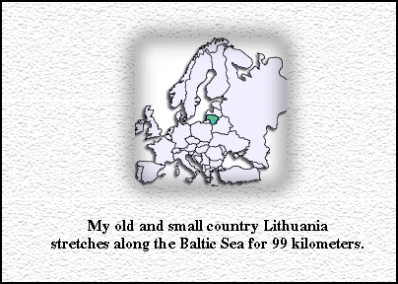
|
Vilnius Through History |

|
|
|
|
|
|
|
|
|
|
|
|
|
|
|
|
|
The capital of Lithuania Vilnius with its about 600,000 inhabitants looks back on a long and excited past. The green, pink and cream buildings in Vilnius have a unique charm. The city has been a thoroughfare between Europe and Russia for centuries and has a wealth of Gothic, Renaissance and Baroque churches as well as palaces and private houses, art galleries and museums. Somehow tragic and full of changes was the history of Lithuania and its capital which “passed from one hand to another thirteen times”. In 1322/23 the Grand Duke Gediminas of Lithuania founded a castle on the hill side to a settlement for merchants. In the 16th century Lithuania was a multiethnic state with its capital as Vilnius, a large city of 20,000 inhabitants, dominated by the steeple of many Catholic churches interspersed with onion domes of Orthodox churches, the minarets of mosques and the facades of synagogues. Religious harmony reigned in the capital and the whole country, stemming from a tradition of tolerance inherited from pagan times. Tolerance towards Orthodox believers, who together with Catholics participated in the work of various state institutions, was later extended towards Protestants as well. In 1563, the Seimas (Parliament) of Vilnius adopted a privilege that granted freedom of religion to all faiths without any exception. In 16th century Vilnius not only Protestant and Catholic ideas intermingled. It was also a city where people of different nationalities lived side by side and communicated closely. In 1795 Lithuania was swallowed by Russia. The russification of the city followed and most of the many catholic churches, built by the Jesuits in their own Baroque style, were changed into Russian orthodox churches. In both world wars of this 20th century Vilnius was occupied by the Germans and suffered major damage. From 1920-39 it once again belonged to Poland until it was – once again – annexed by Stalin. In 1990 Lithuania recovered it independence and Vilnius became the capital of independent Lithuania again.
|
|
You are visitor
|
Last modified: 21-11-2004 |
Page 15. |